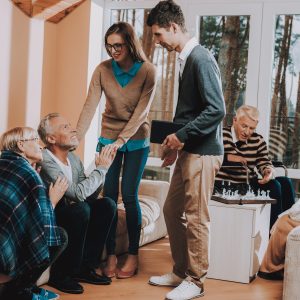How Can We Better Support and Educate Family Caregivers?
 According to estimates from the National Alliance for Caregiving, during the past year, 65.7 million Americans (or 29 percent of the adult U.S. adult population involving 31 percent of all U.S. households) served as family caregivers for an ill or disabled relative. That is 65.7 million family caregivers who are desperately needing education, training, support and help with finding available resources. We must do a better job as these numbers are increasing drastically with our aging population.
According to estimates from the National Alliance for Caregiving, during the past year, 65.7 million Americans (or 29 percent of the adult U.S. adult population involving 31 percent of all U.S. households) served as family caregivers for an ill or disabled relative. That is 65.7 million family caregivers who are desperately needing education, training, support and help with finding available resources. We must do a better job as these numbers are increasing drastically with our aging population.
I am passionate about family caregiving needs. Why? Because over 25 years ago, I became a family caregiver myself. With zero preparation and knowledge, little did I know that for the next 15 years I would be identified as a family caregiver for my aging parents. But 25 year ago I didn't identify as a caregiver for my parents. I was raising my two young children for goodness sake! I loved and respected my parents dearly so I was just doing what a loving child should do. Little did I know the emotional, physical and spiritual challenges that comes with caring for an aging parent. Would I trade that time? Absolutely not! Did it make me a passionate advocate for anyone sharing the journey that I walked? You bet.
I'm going to be very frank in saying that in the 25+ years that I have personally and professionally been in the family caregiving space, we have made some strides. Not fast enough to keep up with demands. We still have lots of work to do to include families to actively and intentionally include them as part of the care team.
A new study lead by Jo-Ana Chase, assistant professor in the University of Missouri's Sinclair School of Nursing, interviewed family caregivers of old adults who received home health care after a hospitalization to better understand caregiver's experience regarding training and support.
She found that most family caregivers receive little formal training, and these caregivers need home health care providers to proactively engage them in planning and decision-making for more effective, coordinated care.
"Caregivers want to know how best to care for their loved ones, but they often feel like they are learning on their own," Chase says.
As stakeholders across the spectrum of care, we will all see better outcomes by including families as a integral member of the care team. But we must do so intentionally. Are we including in our staff training the needs of families? There are many complex issues that family caregivers face, and if staff do not understand their challenges, then they certainly cannot be expected to help them find solutions.
The weaknesses in our healthcare system have been made abundantly clear with the events of COVID-19. At the same time, we have many opportunities to take from these lessons and make our organizations better. This is the time that leaders must take a hard look at how effectively they are training and supporting their staff AND families. Without both of these working together, we'll continue to struggle in providing the quality of care that our older adults deserve.
Pam Brandon is President and Founder of AGE-u-cate Training Institute, a global company dedicated to quality aging and dementia care training. AGE-u-cate's latest initiative, REVEAL Aging Workforce training includes in all of it's courses, staff training on the needs of families. Pam may be reached at pam@AGEucate.com


